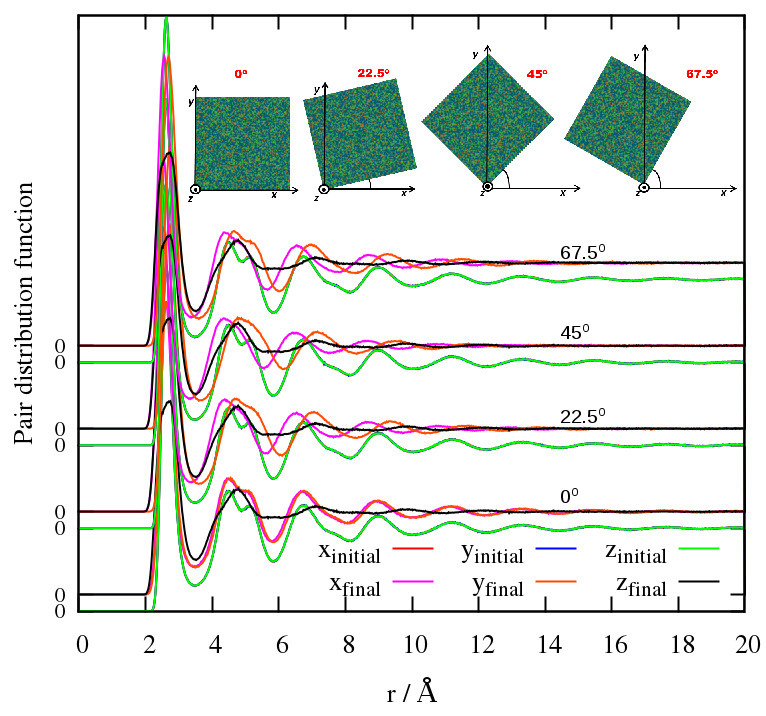"Study of the elastic inhomogeneity in metallic glass in the mesoscale"
Jan 23, 2020
Jorge Enrique defended his thesis coadvised by Daniel Crespo and Eloi Pineda on the 28th of June in Campus del Besos. Entitled "Study of the elastic inhomogeneity in metallic glass in the mesoscale", the thesis presents an analysis of the anisotropy of glasses using molecular dynamics simulations
Metallic glasses are amorphous solids produced by rapid cooling, with disordered atomic structure and lacking long-range order. This structural disorder makes them to show mechanical properties different from those observed in a crystalline solid. Metallic glasses are ideally isotropic, but they can become anisotropic during the manufacturing process or as a result of non-homogeneous plastic deformation, creep or other mechanical processes. Experimental studies showed remnant anisotropy in amorphous PdNiCuP under a homogeneous deformation regime at temperatures close to the glass transition. In this thesis we studied the remnant anisotropy induced by shear in two amorphous systems by using molecular dynamics simulation. The Cu13Ni34Pd53 system was chosen to approach the PdNiCuP composition while the Zr46Cu46Al8 system is a real excellent metallic glass former.
Using simulations, amorphous systems containing millions of atoms were reproduced by fast cooling from the liquid and subsequent thermal annealing. Both systems were then sheared in the [100] direction at a deformation speed of 1010 s-1, and returned to its original form at the same speed. Shearing simulations were performed in isothermal-isobaric conditions at different temperatures. The resulting states were examined using the directional pair distribution functions (d-PDF), calculated from the distribution function of interatomic distances in planes perpendicular to some selected axes.
The shear and recovery process induced the creation of free volume, falling into the category of rejuvenation processes discussed in the literature. Counterintuitively, the process of free volume creation was accompanied by a reduction of the distance of the first maximum of the pair distribution function g(r), indicating a decrease of the most likely distance between first neighbors. However, this decrease in the mode of the pair distribution was accompanied by an asymmetric increase of the width of the first peak. This explains the apparent contradiction between the increase in the volume and reduction of the most probable distance of first neighbors. Simultaneously, the second coordination sphere was found to become more homogenous after the deformation and recovery process. As a result, medium range order is somehow increased.
Remnant anisotropy was detected in both systems after a deformation-recovery cycle. The intensity of anisotropy in the d-PDF of Zr46Cu46Al8 was lower than in Cu13Ni34Pd53, possibly due to the different ratios of the atomic radii of the constituent elements. Anisotropy was found concentrated in the [110] and [1-10] planes, corresponding to the planes of maximum and minimum shear respectively. This result indicates that remnant anisotropy after mechanical deformation is highly directional but can be unnoticed if not searched for. Although it seems a general feature in metallic glasses it cannot be detected by scattering experiments if the probed volume and geometry of the experiment is not chosen adequately.

Share: